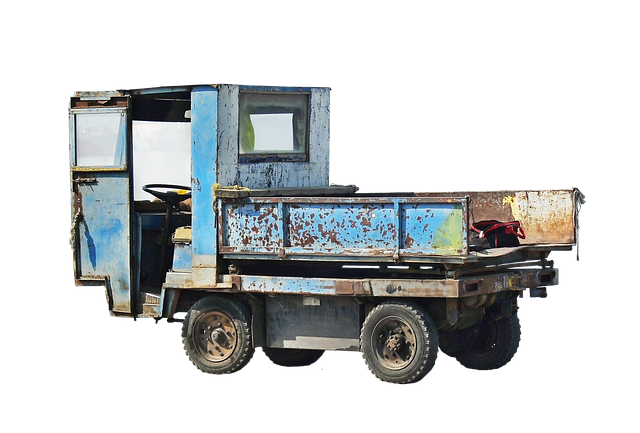Looking to register your car in California? This comprehensive guide walks you through every step, from understanding eligibility to acquiring your license plate. To ensure a smooth process, gather essential documents, prepare your vehicle for inspection by a DMV VIN verifier, and choose between visiting an office or using the online system. We’ll break down the final stages, including payment, receipt, and securing your new plates.
- Understand Eligibility and Requirements for Car Registration in California
- Gather Necessary Documents for Car Registration with DMV
- Prepare Your Vehicle for Inspection by a DMV Vin Verifier
- Visit a DMV Office or Use the Online Registration System for Convenience
- Finalize the Car Registration Process: Payment, Receipt, and License Plate Acquisition
Understand Eligibility and Requirements for Car Registration in California

Before you begin the registration process, it’s crucial to understand the eligibility and requirements for car registration in California. To register your vehicle, your car must meet certain criteria set by the Department of Motor Vehicles (DMV). One key step is ensuring that your vehicle has passed a recent safety inspection, which checks critical components like brakes, lights, and tires. Additionally, you’ll need to provide proof of insurance and pay the registration fees.
Another important aspect is obtaining a Vehicle Identification Number (VIN) verifier from the DMV or using a trusted third-party service for mobile VIN verification. This process ensures that your car’s VIN is accurate and matches the vehicle’s specifications, enhancing security and preventing fraud. With these prerequisites in place, you can smoothly navigate the registration procedure.
Gather Necessary Documents for Car Registration with DMV

Before heading to the California Department of Motor Vehicles (DMV), ensure you gather all the essential documents required for car registration. This includes proof of ownership, typically a vehicle title; a valid driver’s license or identification card; and current auto insurance documentation. Additionally, you’ll need a DMV form 137, which is an Application for Title and Registration. For a seamless process, consider using a DMV vin verifier to quickly validate the vehicle’s identity by checking its unique identification number (VIN).
A mobile vin verification service can be particularly useful if you’re busy or prefer a more convenient approach. Alternatively, a vin inspection conducted by a trusted professional can also ensure that your car meets all necessary safety and legal standards before registration. Always double-check the accuracy of all documents to avoid delays during the registration process at the DMV.
Prepare Your Vehicle for Inspection by a DMV Vin Verifier

Before heading to the California DMV to register your car, make sure your vehicle is prepared for inspection by a DMV Vin Verifier. This means having all necessary documents, including proof of ownership and insurance, readily available. Additionally, ensure your vehicle is in safe operating condition, as the inspector will check for basic safety features like functioning lights, brakes, and tires.
One way to streamline this process is by using a mobile vin verifier service. These services bring the inspection to you, saving time and effort. A mobile vin inspection involves a professional coming to your location to perform a thorough check of your vehicle’s VIN (Vehicle Identification Number), ensuring it matches the information in the DMV records. This step is crucial as it helps prevent fraud and ensures that your car meets all legal requirements for registration.
Visit a DMV Office or Use the Online Registration System for Convenience

When registering your car in California, you have two convenient options. Visit a DMV office or utilize the online registration system. For those who prefer a more traditional approach, visiting a DMV offers a straightforward process. You’ll need to bring essential documents like proof of ownership and identification. A DMV vin verifier is used to ensure the vehicle’s identification number (VIN) is accurate and matches the vehicle. This step is crucial in preventing fraud and ensuring a smooth registration experience.
Alternatively, California’s online registration system streamlines the process, allowing you to complete most steps from the comfort of your home. The mobile vin inspection or mobile vin verification process involves using a digital tool to check the VIN and save time. Either way, choosing between a physical visit or an online approach depends on personal preference and convenience.
Finalize the Car Registration Process: Payment, Receipt, and License Plate Acquisition

After submitting your application and documents to the DMV, it’s time to finalize the car registration process. Payment is typically made at the DMV office using a credit card or cash. Keep your receipt for future reference as it confirms your vehicle’s registration status. Once registered, you’ll receive a set of license plates that must be displayed on your vehicle at all times.
Before hanging those plates, ensure they match the information on your registration and driver’s license. A mobile VIN verifier or even a simple vin inspection can help verify your vehicle identification number (VIN) with the DMV records to confirm all details are accurate. This step is crucial for avoiding future issues with law enforcement or during routine inspections.
Registering a car in California is a straightforward process that requires understanding the eligibility criteria, gathering essential documents, and undergoing a vehicle inspection by a DMV-approved VIN verifier. You can either visit a local DMV office or utilize their online registration system for added convenience. Once all requirements are met, including payment and receipt of your registration, you’ll receive a license plate, completing the car registration process in California.



